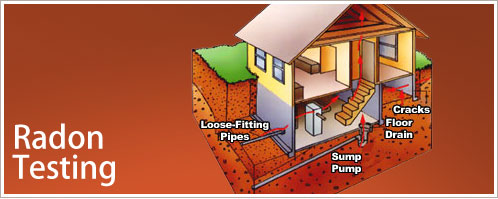When discussing lung cancer cells by itself, smokers go to a much higher risk that non-smokers. According toan articlepublished by the American Public Wellness Organization," [m] ore than 85 % of radon-induced lung cancer cells fatalities are amongst smokers". While quitting smoking cigarettes will greatly lower your possibilities of obtaining lung cancer cells, however, you are still in jeopardy if you are overexposed to radon. National Cancer cells institute, "it is estimated that more than 10 percent of radon-related cancer fatalities occur amongst nonsmokers". Bear in mind that we're continuously obtaining radiation in one type or another, but the quantity and also size of direct exposure is what issues.
Among those living in residences examined with high radon focus, parents of young children are commonly the most concerned. They need to know the comparable threat in terms of the lifetime loved one threat of developing lung cancer for childhood radon exposure. They intend to comprehend the lifetime threat for their children as well as what the comparable life time radon exposure is when their youngsters have stayed https://www.sendspace.com/file/gcz45v in high radon residences for a few years? A solution to this inquiry of risk equivalency is recommended below. The lower the radon level in your house, the lower your household's danger of lung cancer cells.

Underground uranium mines might have high concentrations of radon due to the fact that radon is an item of the radioactive degeneration of uranium. Lots of uranium miners in the Four Corners region contracted lung cancer cells and also various other pathologies as a result of high degrees of direct exposure to radon in the mid-1950s. Your threat of lung cancer cells is specifically high if you smoke and you are subjected to raised radon degrees. The UNITED STATE Epa providesradon risk comparison charts for individuals that smoke and also those that have never ever smoked.
Exactly how To Examine Your Residence For Radon

- Outdoors, radon is rapidly thinned down by atmospheric blending and is of no additional issue.
- Nonetheless, in confined spaces such as household houses, radon can accumulate to unsafe levels.
- Radon causes about 21,000 lung cancer cells fatalities every year in the U.S
- Radon is a radioactive gas created by the decay of natural uranium in rocks as well as soils throughout the Earth's crust.
- Long-lasting direct exposure to raised interior radon focus has been figured out to be the 2nd leading cause of lung cancer cells in grownups after tobacco smoking cigarettes.
Researchers estimate that lung cancer deaths can be reduced by 2 to 4 percent, or about 5,000 deaths, by lowering radon degrees in residences going beyond the EPA's activity level. Radon is a radioactive gas released from the normal degeneration of Go to the website the elements uranium, thorium, and radium in rocks as well as soil. It is an invisible, odor-free, tasteless gas that seeps up via the ground as well as diffuses right into the air. In a couple of locations, relying on local geology, radon dissolves right into ground water as well as can be launched into the air when the water is made use of.
Historically, a lot of the worry concerning radon originated from researches of uranium miners direct exposure to reasonably high degrees of radon gas. Over the previous years, there have been a number of very good epidemiological studies of people subjected to radon in their residences revealing a boosted danger of lung cancer cells. Recently there have actually additionally been efforts to pool the several researches together to supply yet stronger proof for the link beteen radon direct exposure in the home and lung cancer cells. These research studies, coming from The United States and Canada, Europe as well as China, confirm that the threats of radon at levels presently thought about acceptable are certainly of public wellness problem. For more information about these studies, see the Maximum Exposure Guideline for Radon in Drinking Water (MeCDC 2006).